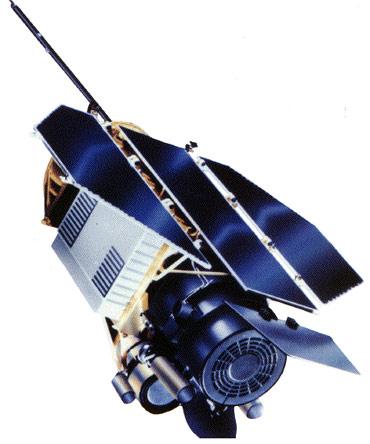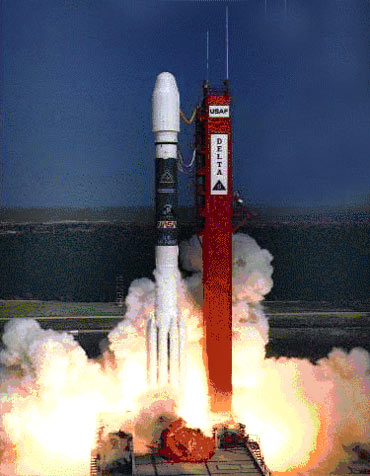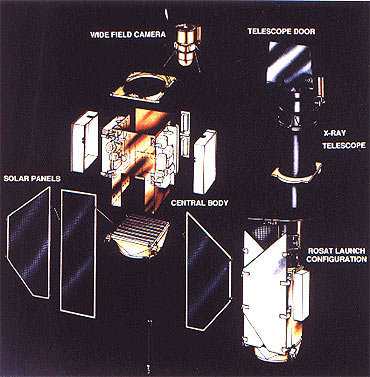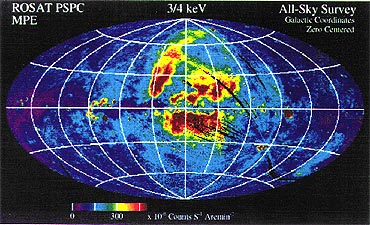 | « Back to article | Print this article |
Doomed satellite may crash into Earth
A 2.4-tonne defunct satellite is expected to make a fiery death plunge to Earth this week, but exactly when and where the doomed satellite will fall still remains a mystery, German space scientists have said.
The massive German Roentgen Satellite, or ROSAT, is expected to plummet to Earth on Saturday or Sunday, though German space officials have also offered a wider re-entry window of between October 21 and October 25.
This latest falling satellite comes after a dead NASA climate satellite, called the Upper Atmosphere Research Satellite, plunged into the Pacific Ocean in late September.
Doomed satellite may crash into Earth
The 2.4-tonne X-ray space observatory is expected to break up as it travels through Earth's atmosphere.
But about 1.7 tonnes of its debris, consisting primarily of up to 30 large glass and ceramic fragments, could survive the intense heat of re-entry and reach the Earth's surface, German aerospace officials said.
"We don't expect big parts to re-enter, except the mirror and the glass and ceramic parts," Jan Woerner, head of the executive board of German space agency, told SPACE.com.
Doomed satellite may crash into Earth
"Usually during re-entry, you have rather clear burning of all the elements, but glass and ceramics may survive and may come down in bigger pieces," he said.
The officials also said that there is a one in 2,000 chance that a piece of ROSAT could strike someone on Earth. That's a slightly higher risk than the 1 in 3,200 chance of a debris hit NASA gave for the UARS satellite fall.
German space officials are actively tracking ROSAT, but they will not be able to determine precisely when and where the satellite will fall until roughly two hours before it impacts Earth.
Doomed satellite may crash into Earth
ROSAT's orbit extends from the latitudes of 53 degrees north and south, which essentially covers a huge swath of the planet. This means it may fall anywhere stretching from Canada to South America, the scientists said.
ROSAT was launched in June 1990. In 1998, the satellite's star tracker failed, causing its onboard camera to be directly pointed at the sun. This permanently damaged the spacecraft, and ROSAT was officially decommissioned in February 1999.
Originally, the dead satellite was projected to fall to Earth in November, but new estimates showed that it may make its fiery descent later this week -- earlier than mission controllers previously thought.
Doomed satellite may crash into Earth
"With satellites like ROSAT, you depend on external circumstances," Woerner said.
"For instance, solar wind and changes in the atmosphere may change the time of re-entry. We just have to wait and observe," he said.
Since the satellite does not have a propulsion system, and there is no fuel left on board, the satellite will make an uncontrolled return to Earth.
"We expect public attention because it's a satellite coming down, but in history, we have had much bigger debris fall," Woerner said.




